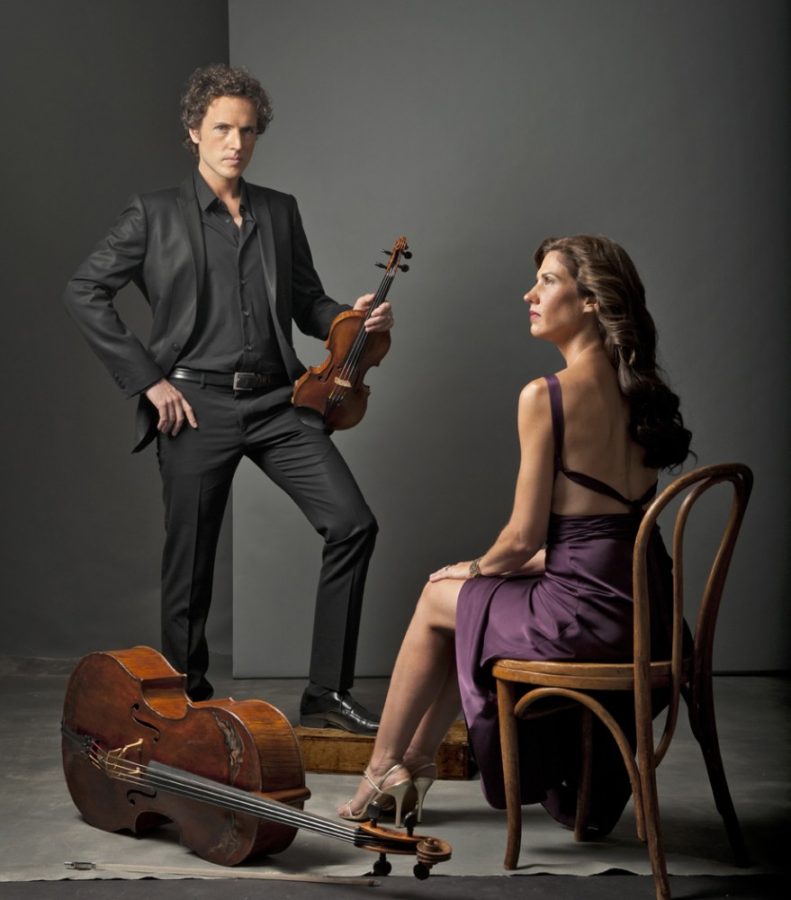As far as world-renowned violinist Tom Fain is concerned, the quality of the instrument is as important as the skill level of the artist. The violinist chose an Italian-crafted violin made in 1717 by Francesco Gobetti for his performance at the Tucson Music Hall last weekend.
“There was something in the air back then, so many talented makers,” Fain said. “I really feel when playing his instrument in particular, I’m communicating with another soul.”
The performance featured internationally known cellist Wendy Sutter, along with Tucson Symphony Orchestra in the performance of “Dancing with Glass and Beethoven.” The performance demonstrated an advanced repertoire that consisted of John Adams, Philip Glass, and Ludwig van Beethoven.
Fain has appeared in several world-renowned venues including performances with the Mexico and Oxford symphonies, Cincinnati Chamber Symphony, Brooklyn and The Hague Philharmonic, and the Curtis Symphony Orchestra. Additionally, Fain was heard on screen on the Grammy-nominated soundtrack of “Black Swan” and more recently, “12 Years a Slave.”
Sutter, known for her work with prestigious orchestras including The Brussels Philharmonic, The Seattle Symphony and The Hague Philharmonic. In 2008, Sutter worked with Philip Glass to record Songs and Poems for Solo Cello, which was written especially for her.
Sutter and Fain have known each other for eight years, recording pieces together, and have performed in more than 200 shows together worldwide, Sutter said.
“I feel a great camaraderie with him as a player,” Sutter said. “It’s very easy for us to play together and that’s not always a given … We think of music the same way, we use imagination … We’re a good match.”
The opening piece in the performance was “Foxtrot for Orchestra,” by John Adams, which featured a selection of instrumentalists from TSO that played the upbeat, dance music. The second piece in the performance, “Double Concerto for Violin and Cello,” was written by Glass for Sutter and designed with Fain in mind as the accompanying violinist.
“He had our styles and our virtuosity in mind,” Sutter said. “It’s a privilege to play it because he really did have our styles in mind which is a great relationship to have with a composer.”
The performance marked the piece’s debut for Tucson Symphony Orchestra and the first performance for Sutter and Fain together in more than a year.
“It seemed like a natural fit,” Fain said. “The piece is beautiful, Philip really outdid himself. The textures range from full orchestra … all the way down to intimate texture of a violin and cello playing together. It’s a really remarkable effect.”
The piece was originally performed in the Spring of 2010 for the Netherlands Dance Theater and has gone on to premiere at other theaters.
“The first time it was kind of terrifying,” Sutter said of the piece composed by Glass. “It feels like you’re a little bit naked because everything in your persona comes out in that piece.”
The performance closed with Symphony No. 7 in A major, Op. 92 by Ludwig van Beethoven, which showcased a variety of music styles and the expertise of Fain, Sutter, and TSO throughout its duration.









